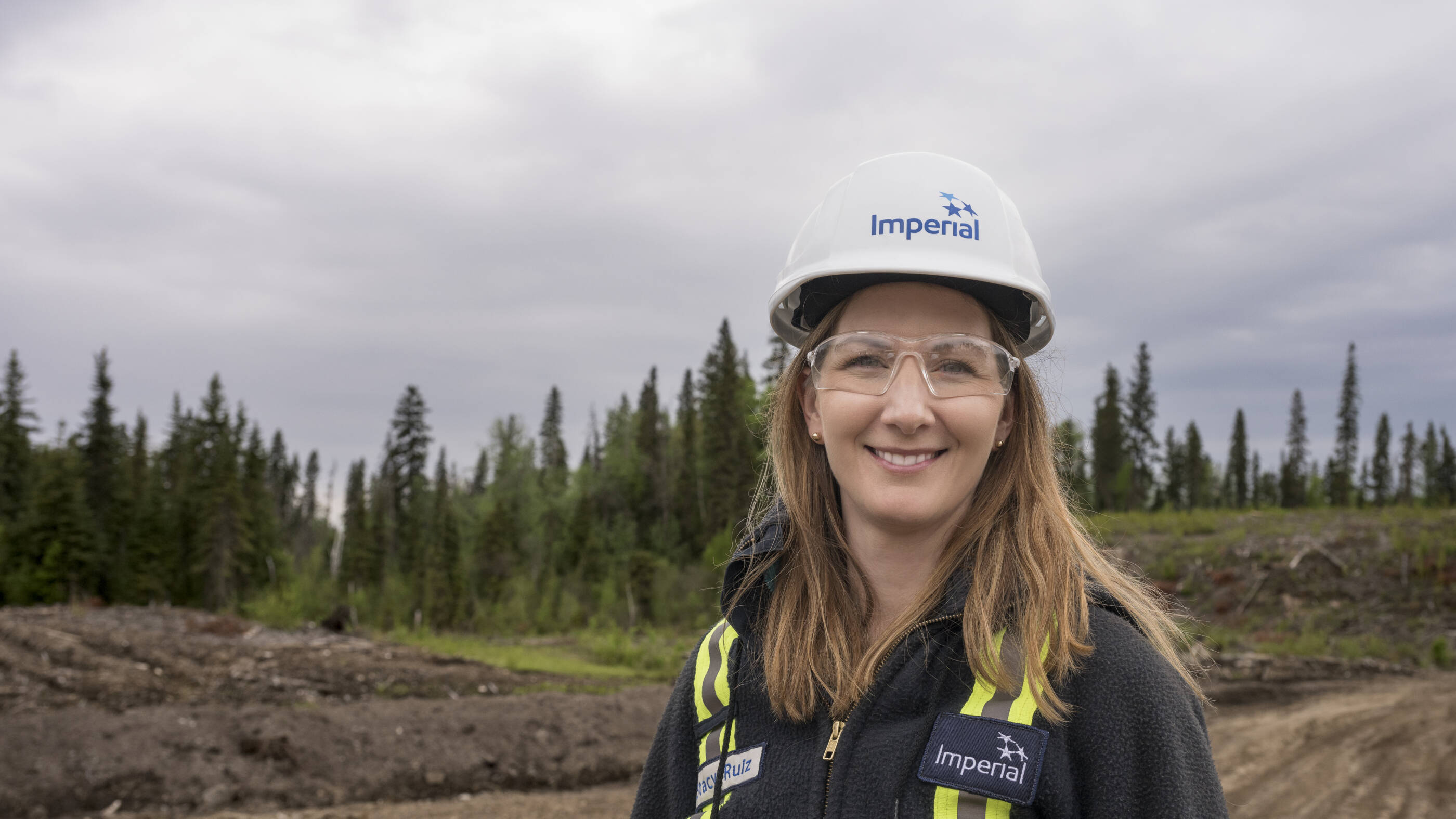selected item
Operations
Strathcona refinery
Emergency contact: 780-449-3776
About Imperial’s Strathcona Refinery
Imperial’s Strathcona refinery is a cornerstone of Canada’s energy infrastructure. Often called the world’s most travelled refinery, our Strathcona refinery has made its way through hill and valley, war and peace, and through the ebbs and flows of Canada’s oil industry.
When our company discovered oil in Leduc in 1947, Alberta’s oil industry began. But we knew we needed a refinery to turn that oil into valuable products. This refinery made its way from Whitehorse on barges, trucks, rail and ice-roads to find its final home on the outskirts of Edmonton.
In 2024, Strathcona refinery processed approximately 187,000 barrels of crude oil daily, producing essential products such as gasoline, diesel, aviation fuel, lubricating oils and asphalt. Additionally, Imperial produces renewable diesel at Strathcona refinery, which is made by combining hydrogen, Canadian-sourced bio-feedstocks such as canola oil and proprietary technology.
The site’s success and resilience are driven by the dedication, expertise and hard work of its ~400-person workforce.
Operations
-
Refinery
Approximately 30 percent of petroleum products sold in western Canada originate from our Strathcona refinery. The refinery is located in Strathcona County near Edmonton, Alberta, and supplies the western Canadian and northern U.S. markets with a variety of essential products, including gasoline, diesel, aviation fuel, lubricating oils, petroleum waxes, heavy fuel oil and asphalt. -
Renewable Diesel Facility
Imperial started production at its new renewable diesel in July 2025. At full capacity, it is expected to be the largest renewable diesel facility in Canada. The project was first announced in 2021 and has the capacity to produce up to 20,000 barrels a day of renewable diesel.
Imperial’s renewable diesel is similar to traditional diesel, can be used with no engine modifications and is well-suited for Canada’s cold weather conditions. The product is made by combining hydrogen, bio-feedstocks such as canola oil sourced from Canadian suppliers and proprietary technology.
Safety and emergency preparedness
Should an incident occur at the site, well-defined plans and emergency response capabilities are in place, which include access to specialized equipment and trained personnel. Our emergency teams also conduct regular drills and simulations to ensure we are always ready to respond.
Site alarm testing
Our emergency warning system is a series of air horn alarms to alert our personnel of potential emergencies at the site. Alarms are tested every Monday at 12 p.m.
Keeping Our Communities Safe
In 2019, the Canadian government updated the Canadian Environmental Protection Act Environmental Emergencies Regulation, more commonly referred to as CEPA E2. As part of these updated regulations, industrial facilities using or storing regulated substances are required to communicate with members of the public who may be affected in the unlikely event of an environmental emergency. The intent of this public notification is to create awareness of prevention and safety measures and communication protocols in place before, during and after an emergency.
Environment
The power of cogeneration
Emissions leak detection
Wastewater management
The power of cogeneration
Emissions leak detection
Wastewater management

Careers
We seek out the best and brightest candidates to ensure the continued success of our operations.

Community
As neighbours, we strive to make contributions that support and strengthen local communities. After all, we live and work here, too.
Apply for fundingContact us
Phone: 780-449-3776 or email us
As a member of the Strathcona Industrial Association, we post information about refinery operations on the industry UPDATEline.
Neighbours can call 1-866-653-9959 to hear recorded information.





